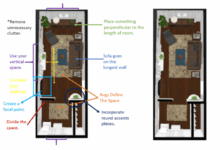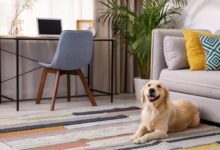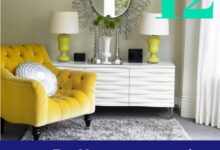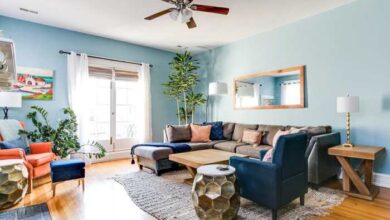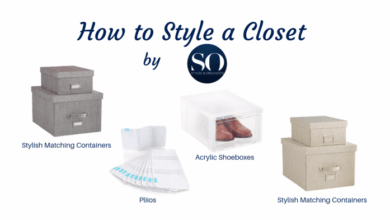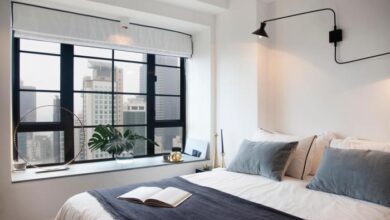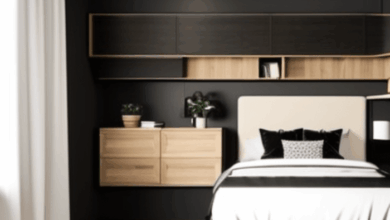How To Choose The Right Rug For Any Room
How to Choose the Right Rug for Any Room is a journey that transforms a space into a cozy haven. The right rug can tie together your decor, add warmth, and create a focal point in any room. Whether you’re looking to enhance your style or make a space more functional, selecting the perfect rug is essential.
From understanding sizes that fit your layout to choosing materials that suit your lifestyle, this guide will help you navigate your choices thoughtfully. Let’s explore how to harmonize aesthetics with practicality, ensuring your rug selection reflects both your taste and needs.
Selecting the Right Rug Size
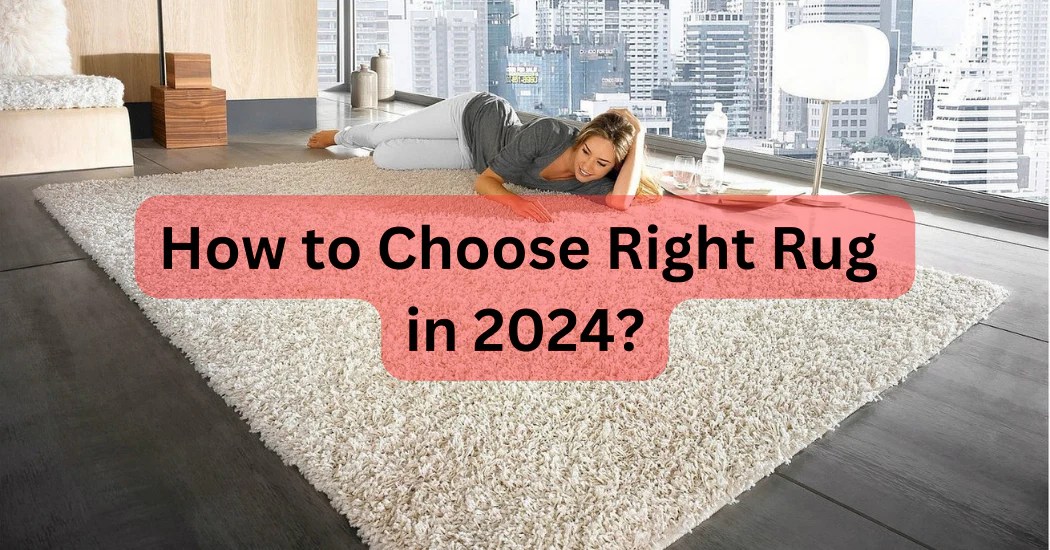
Source: ruggallery.net
Choosing the right rug size is essential for creating a harmonious and inviting space in your home. A well-sized rug can define areas, add warmth, and enhance the overall aesthetic of a room. It’s a small detail that can make a big difference, and understanding how to measure your space is the first step to finding the ideal fit.To determine the appropriate rug size, you will need to take accurate measurements of your room.
Start by measuring the length and width of the furniture area you want the rug to cover, including any seating arrangements. Ideally, a rug should extend at least 18 inches beyond the furniture to create a cohesive look. If you’re working with a smaller room, you might choose to place the front legs of the furniture on the rug for a more compact feel.
Standard Rug Sizes for Different Room Types
Understanding standard rug sizes can guide you in picking the right fit for your specific room. Each room has its own needs based on its size and layout. Here are some common sizes and their typical uses:
- 5′ x 8′: This size works well in smaller living rooms, under coffee tables, or in bedrooms for a cozy touch.
- 8′ x 10′: A versatile choice, ideal for larger living rooms or dining areas, allowing for all furniture legs to sit comfortably on the rug.
- 9′ x 12′: Perfect for spacious living rooms or dining rooms, this size accommodates large furniture pieces and creates a unified area.
- Round Rugs: Sizes like 4′ or 6′ rounds can serve beautifully in dining spaces or at the center of a seating arrangement, softening corners and creating flow.
When selecting a rug size, remember the arrangement of the furniture. A rug can anchor a room, so it’s important to visualize how it will interact with your existing decor. Position your furniture pieces thoughtfully to create an inviting atmosphere, ensuring that the rug complements rather than overwhelms the space.
“A rug can not only define a space but also add personality and warmth—it’s an essential element of any room’s design.”
Incorporating the right rug size into your design plan can transform your space, making it feel more complete and inviting. By carefully measuring and considering furniture arrangements, you can find a rug size that enhances the beauty and functionality of any room in your home.
Choosing the Right Material
Selecting the appropriate rug material can transform not just the aesthetics of a room but also its comfort and functionality. The material of your rug plays a crucial role in determining its durability, maintenance, and how well it complements your home’s decor. Understanding the various options available will help you make an informed decision that aligns with your lifestyle and design preferences.
In the world of rugs, materials can primarily be divided into natural fibers and synthetic fibers, each boasting unique characteristics that cater to different needs and tastes. Natural fibers include wool, cotton, jute, and sisal, while synthetic options often consist of nylon, polypropylene, and polyester. Each material brings its own set of attributes that can significantly influence the overall ambiance of your room.
Natural Fibers
Natural fibers are renowned for their beauty and intrinsic qualities. They offer a range of textures and colors that can create warmth and elegance in any space. Here’s a closer look at some popular natural fiber options:
- Wool: Known for its durability and softness, wool rugs can resist stains and are easy to clean. Their natural insulation properties help maintain warmth, making them an excellent choice for cozy environments.
- Cotton: Cotton rugs are lightweight and easy to maintain. They are often machine washable, making them suitable for high-traffic areas or homes with children and pets.
- Jute: Jute rugs bring an earthy, organic feel to interiors. They are durable and environmentally friendly, perfect for adding texture to bohemian or rustic-themed spaces.
- Sisal: Similar to jute, sisal rugs are made from natural fibers and offer strength and durability. They have a coarse texture that works well in casual settings.
Synthetic Fibers
Synthetic fibers are designed for resilience and practicality, often mimicking the look and feel of natural materials while providing additional benefits. Here’s how synthetic fibers stack up:
- Nylon: Nylon rugs are known for their exceptional durability and stain resistance. They are often used in commercial settings and are perfect for high-traffic areas.
- Polypropylene: This material is resistant to moisture and mildew, making it ideal for outdoor use or areas prone to spills. Polypropylene rugs are also easy to clean and maintain.
- Polyester: Polyester rugs offer a soft touch and vibrant colors. They are fade-resistant and suitable for homes with lots of sunlight.
Different materials can greatly influence the aesthetic of a room. For instance, a plush wool rug can add a sense of luxury and comfort, whereas a sleek synthetic option might lend a modern, minimalistic vibe. The choice of rug material not only enhances the visual appeal but also contributes to the functionality of the space, making it imperative to consider both style and practicality when making your selection.
Understanding Rug Styles and Patterns
Rugs are not merely functional; they are integral to a room’s aesthetic and emotional appeal. With a plethora of styles and patterns available, choosing the right rug can significantly enhance your home’s decor. Understanding how different rug designs relate to various interior themes will allow you to create a cohesive and inviting atmosphere.The style and pattern of a rug can dramatically alter the perception of space in a room.
For instance, a large, bold pattern may draw the eye and make a space feel smaller, while a subtle, light pattern can help open up a room, providing an airy feel. Moreover, the right combination of colors and designs can either complement or clash with existing elements, influencing the overall ambiance of the room.
Popular Rug Styles and Their Suitability
When selecting a rug, it’s essential to understand the popular styles available and their suitability for different decor themes. Here are some renowned styles:
- Traditional Rugs: Characterized by intricate patterns and rich colors, traditional rugs, like Persian or Oriental, are ideal for classic and formal settings.
- Modern Rugs: Featuring clean lines and geometric designs, modern rugs fit perfectly in contemporary spaces, adding a touch of sophistication.
- Bohemian Rugs: Known for their eclectic patterns and vibrant colors, these rugs bring warmth and a sense of adventure to casual or artistic interiors.
- Shag Rugs: Soft and plush, shag rugs create a cozy feel, making them suitable for relaxed, informal spaces like living rooms or bedrooms.
- Outdoor Rugs: Designed to withstand the elements, these rugs are perfect for patios or porches, combining durability with style.
Influence of Patterns on Space Perception
Rug patterns can significantly affect how we perceive the size and layout of a room. Here are the key aspects to consider:
- Large Patterns: Bold, large-scale designs can create a focal point but may also make a small room feel cramped.
- Small Patterns: Subtle, small patterns can add texture without overwhelming a space, making them ideal for smaller rooms or areas with busy decor.
- Striped Patterns: Horizontal stripes can make a narrow room appear wider, while vertical stripes can add height to a low ceiling.
- Neutral Patterns: Rugs with soft, neutral patterns can blend seamlessly into a room, providing a calm backdrop that enhances other design elements.
Trendy Colors and Patterns for the Current Season
As seasons change, so do the trends in rug colors and patterns. Currently, the following shades and designs are making waves in home decor:
- Earthy Tones: Colors like terracotta, olive green, and deep browns are popular, resonating with a natural, grounded feel.
- Pastels: Soft hues like blush pink, light blue, and mint green are favored for their calming effect, perfect for spring and summer.
- Geometric Patterns: Bold geometric shapes are trending, adding a modern touch to both traditional and contemporary spaces.
- Floral Designs: Large floral prints bring a fresh, vibrant energy, ideal for brightening up any room.
“The right rug can transform a room, acting as a foundation that ties together various elements of decor.”
Assessing Room Functionality
The functionality of a room significantly influences the choice of rug. Each space in your home serves a unique purpose, and understanding how that purpose affects your rug selection will lead to a more harmonious and practical environment. Whether you are designing a bustling living room or a serene bedroom, the right rug can enhance the room’s use while also adding beauty.When considering a rug, factors such as traffic patterns, the presence of children or pets, and the intended mood of the space play a crucial role.
For instance, high-traffic areas require durable materials that can withstand wear, while relaxation spaces may benefit from softer, more luxurious options. Below is a table that Artikels rug recommendations based on room usage.
| Room Type | Recommended Rug Size | Material Suggestions | Style Recommendations |
|---|---|---|---|
| Living Room | 8×10 ft or larger | Wool, synthetic blends | Contemporary, traditional |
| Dining Room | 6×9 ft or larger, allowing for chairs to sit on the rug | Wool, jute | Modern, patterned |
| Bedroom | 5×8 ft or larger under the bed | Shag, cotton | Soft, calming colors |
| High Traffic Areas (Hallways, Entryways) | Runner rugs (2×6 ft or similar) | Indoor/outdoor material, nylon | Simple, durable patterns |
| Kids’ Rooms | 5×8 ft or larger | Machine washable materials, synthetic blends | Bright colors, playful designs |
In homes with children or pets, additional considerations come into play when choosing rugs. It is important to select materials that are not only durable but also easy to clean. Look for rugs that can withstand spills and stains, and consider options like indoor/outdoor rugs which are often designed for heavy use. Additionally, it’s wise to choose designs and colors that can mask dirt and wear over time, rather than displaying every scuff and spill.
Low-pile rugs are also beneficial as they minimize tripping hazards and make playtime easier for little ones and furry friends alike.
Choosing the right rug for a functional space means prioritizing both practicality and aesthetics, ensuring that your home remains beautiful and livable.
Balancing Aesthetics and Practicality
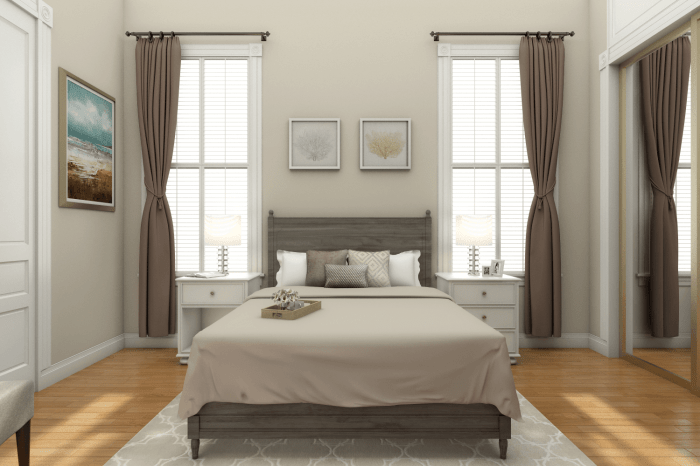
Source: decorilla.com
Finding the perfect rug for your space is not just about choosing a beautiful design; it’s also about ensuring it meets your everyday needs. Striking a balance between aesthetics and practicality can transform a room into a harmonious sanctuary that feels both stylish and functional. To achieve this, consider how design elements can coexist with practical requirements when selecting your rug.Choosing a rug that complements your existing furniture and decor is essential for maintaining cohesive aesthetics.
It’s important to keep in mind the colors, textures, and styles present in your space. A well-selected rug can tie a room together, reflecting your personal style while ensuring that it remains inviting and usable. When selecting a rug, consider the following factors to maintain this balance:
Design Elements and Practical Needs
To create a space that feels both beautiful and functional, think about how your rug can serve multiple purposes while enhancing the overall look of the room. Here are key aspects to consider when selecting a rug:
- Color Coordination: Choose a rug that includes colors found in your furniture or wall art. This creates visual unity. For example, if you have a navy sofa, a rug with hints of navy, beige, or white can create a subtly coordinated look.
- Texture Compatibility: Consider the texture of the rug against your existing furnishings. A plush, shag rug can add warmth and softness to a modern leather couch, while a flatweave can complement a minimalist aesthetic beautifully.
- Style Harmony: Ensure that the rug’s style aligns with the theme of the room. A vintage rug can bring charm to a contemporary space, while a modern geometric rug can enhance a traditional setting.
- Size and Scale: The size of the rug should be proportionate to the furniture it interacts with. A large area rug can anchor a seating arrangement, while a smaller rug might work well under a coffee table.
To ensure that your rug remains practical in daily life, select materials that are not only aesthetically pleasing but also easy to maintain. Here are options that offer both style and ease of cleaning:
Material Choices for Style and Durability
Practicality in a rug often comes down to the materials used. Different materials offer varying levels of durability and ease of cleaning, making them suitable for specific environments. Consider the following:
- Wool: Naturally stain-resistant and durable, wool rugs can withstand heavy foot traffic while providing warmth and comfort.
- Synthetic Fibers: Rugs made from materials like polypropylene or nylon are excellent for busy households as they are often stain-resistant and easy to clean.
- Natural Fibers: Options like jute or sisal can add an organic touch to your decor. However, they may require more care regarding spills and stains.
- Indoor-Outdoor Options: Rugs designed for outdoor use can also work indoors for high-traffic areas, providing durability and easy maintenance.
“A rug should not only beautify a space but also stand up to the everyday challenges it faces.”
Selecting the right rug is a journey of merging beauty with functionality. By thoughtfully considering your existing decor and prioritizing materials that cater to your lifestyle, you can create an inviting and stylish space that feels just as good to live in as it looks.
Setting a Budget for Rug Purchase
Establishing a budget for purchasing a rug can be a vital step in ensuring that you find the perfect match for your space without breaking the bank. Rugs come in a variety of shapes, sizes, and materials, each with its own price range. Understanding the balance between quality and cost will help you make informed decisions tailored to your needs.To begin setting your budget, consider the size of the rug you need, as larger rugs typically come with a higher price tag.
Additionally, the quality of materials plays a significant role in pricing. Handwoven or high-quality wool rugs may require a larger investment upfront but can last much longer, making them a worthwhile choice in the long run. In contrast, lower-cost options may need replacing more frequently.
Cost-effective Options versus High-end Rugs
When choosing between cost-effective rugs and high-end options, it’s important to weigh the longevity and potential investment value of each type. Cost-effective rugs often provide immediate aesthetic appeal and are suitable for temporary living situations or for those on a tight budget. However, they may wear out quickly and require replacement within a few years. High-end rugs, while initially more expensive, are often made from durable, quality materials that can withstand the test of time.
They not only enhance the look of your space but can also be considered an investment, potentially increasing the value of your home due to their craftsmanship and rarity.
“Investing in a high-quality rug can be more economical in the long run, as it reduces the need for frequent replacements.”
To assist in finding budget-friendly options, consider the following brands known for their quality and affordability:
- IKEA – Offers a variety of stylish and affordable rugs suitable for various tastes.
- Target – Features a range of trendy designs at budget prices, perfect for updating your decor.
- Wayfair – Provides a vast selection of rugs in different styles and price points, making it easy to find something within your budget.
- Rugs USA – Known for sales and discounts, this brand offers quality rugs at competitive prices.
- Amazon Basics – Offers no-frills, cost-effective options that still deliver on style.
Visualizing the Rug in Your Space
When it comes to selecting a rug for your home, visualizing how it will fit within your space can significantly enhance the decision-making process. This step is crucial, as a rug not only adds warmth and comfort to a room but also serves as a focal point that ties together the overall décor. Understanding how to effectively visualize a rug can help you avoid costly mistakes and ensure harmony in your design choices.A few simple techniques can assist you in picturing how a rug will look in your room.
One effective method is to use digital tools and apps designed for layout planning. These applications allow you to create a virtual representation of your space, where you can experiment with different rug sizes, styles, and colors. By inputting the dimensions of your room, you can arrange furniture and visualize the rug’s placement in real time, helping you make informed choices before purchasing.
Utilizing Digital Tools and Fabric Swatches
Digital tools can greatly enhance your ability to visualize a rug in your space. Many apps offer features that help you design a room layout and see how different rugs will look with your existing décor. These tools typically allow you to upload photos of your room and try out various rug designs and sizes. Using physical fabric swatches and paint samples is equally important for ensuring color cohesion.
Here are some strategies for effectively utilizing these resources:
- Measure Your Space: Accurately measure your room and create a scaled representation to ensure a precise fit.
- Try Out AR Apps: Some apps use augmented reality (AR) to project a digital version of the rug onto your real space, allowing you to see how it looks from different angles.
- Gather Swatches: Collect fabric swatches of the rug material and color, alongside paint samples from your walls, to visualize the overall scheme.
- Place Swatches in the Room: Tape or hold swatches against your walls and furniture to observe how they interact with the lighting and other colors in the room.
- Combine Elements: Consider how the texture of the rug complements the fabrics of your furniture and other decor items; this creates a more harmonious look.
Incorporating these techniques will help you visualize the rug in your intended space, ensuring that your final choice enhances the overall aesthetic and functionality of your room.
Closing Summary
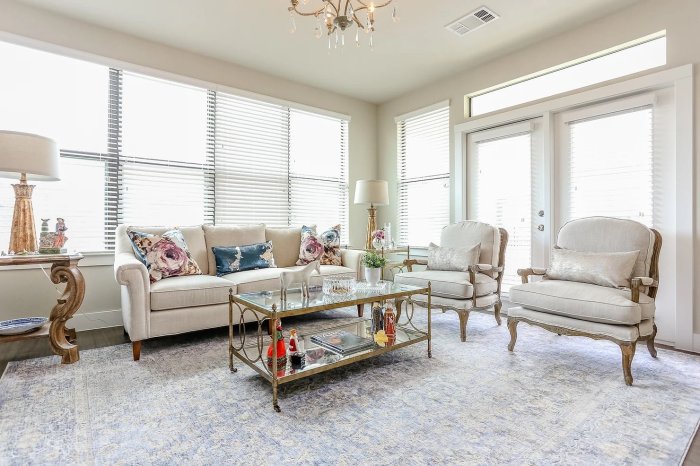
Source: squarespace-cdn.com
In conclusion, choosing the right rug is not just about aesthetics; it’s about creating a welcoming atmosphere in your home. By considering size, material, style, functionality, and budget, you can find a rug that complements your space perfectly. Remember, the right rug doesn’t just sit on the floor; it enhances your home’s heart and soul.
FAQ Resource
What size rug should I choose for my living room?
A good rule of thumb is to choose a rug that allows the front legs of your furniture to sit on it, creating a cohesive look. Standard sizes for living rooms often range from 8×10 feet to 9×12 feet.
How do I clean and maintain my rug?
Regular vacuuming is important, along with spot cleaning stains as they occur. For deeper cleaning, professional services or specific cleaning products recommended for your rug’s material should be used.
Can I use a rug in a high-traffic area?
Yes, but it’s best to choose durable materials like synthetic fibers or tightly woven natural fibers that can withstand wear and tear.
Should I match my rug to my furniture?
While it’s not necessary to match exactly, choosing complementary colors and styles will help create a harmonious look in the room.
What is the best way to visualize a rug in my space?
You can use digital tools or apps to visualize your rug layout or tape out the rug’s dimensions on the floor to see how it fits before making a purchase.

